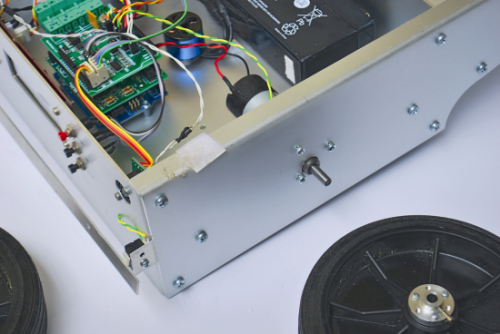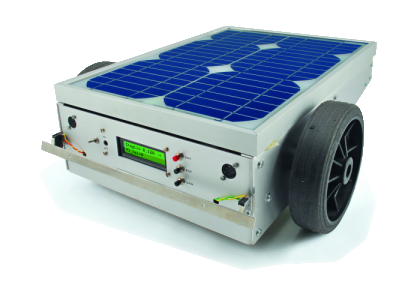This article originally appeared at: https://www.youtube.com/watch?v=k3SbEWFSA8s
Average Internet Celebrities Make $75,000 Per Instagram Ad and $30,000 Per Paid Tweet
Here’s How Much Celebrities Make in the Instagram Product Placement Machine Here’s How Much Celebrities Make in the Instagram Product Placement Machine Here’s How Much Celebrities Make in the Instagram…
It probably will not surprise you to learn that your favorite beauty blogger or reality television… Read more Read more
The New York Times has a new article about the FTC’s efforts to get celebrities to more clearly define ads. Kim K and others have gotten into hot water with agencies like the FDA for being misleading, and the FTC has not been too happy with the opaque nature of celebrity endorsements on social media.
But the most fascinating part of the article might be about precisely how much celebrities can rake in from social media posts.
Captiv8, a company that connects brands to influencers, says someone with three million to seven million followers can charge, on average, $187,500 for a post on YouTube, $75,000 for a post on Instagram or Snapchat and $30,000 for a post on Twitter. For influencers with 50,000 to 500,000 followers, the average is $2,500 for YouTube, $1,000 for Instagram or Snapchat and $400 for Twitter.
This 12-Year-Old Could Become Cornell’s Youngest Graduate Ever
Jeremy Shuler could become Cornell’s youngest graduate ever as he begins classes this fall at the age of 12.
This article originally appeared at: https://www.youtube.com/watch?v=YcnHqxnM86k
Rackspace jumps after Apollo Global buys it in $4.3 billion deal
Cloud company Rackspace on Friday announced that it has entered into a $4.3 billion cash deal with affiliates of Apollo Global Management to become a private company.
Shares of the cloud-computing company climbed more than 4 percent following the announcement.
Rackspace agreed to be acquired for $32 per share.
“We are presented with a significant opportunity today as mainstream companies move their computing out of corporate data centers and into multi-cloud models,” Taylor Rhodes, president and CEO of Rackspace, said in a press release.
The offer represents a premium of 38 percent compared with Rackspace’s closing stock price on August 3, 2016, the last trading day prior to reports speculating about a potential transaction.
Under the deal, funds managed by Searchlight Capital Partners will make an equity investment in the acquired company.
Rackspace’s board of directors unanimously approved the transaction and recommends that stockholders vote in favor of the deal.
(Photo courtesy of Rackspace)
Monitor Your Entire Ecommerce Sales Funnel with Real Data
All of this data can be overwhelming.
The question is: what metrics really matter?
In the world of ecommerce -whether you sell products or services -the hands-down, undisputed, heavy-weight-champion metric … is your sales funnel.
Why? Because at the end of the day, nothing but sales pay the bills.
So, to enable you to monitor your entire sales funnel, here are four sources of data and exactly what you should do with them:
- Your Traffic
- Your Leads
- Your Sales
- Your Competition
Your Traffic
Let’s start with the widest point of your sales funnel: your traffic.
 Image Credit: Prosar.com
Image Credit: Prosar.com
What is the temperature of your traffic: warm or cold?
Could Your “Trust-Factor” Survive: How to Protect Your Data … and Your Customers
Let’s start with a simple truth: when it comes to relationships—personal or professional—trust is everything. Trust isn’t easily given … and once it’s broken, getting it back is nearly impossible.
Online business is no different. If your customers don’t trust you to keep their details confidential, deliver the results you promised, and follow appropriate safety procedures …they’re not going to use you.
It’s that simple. Trust breaches cost your business customers, time, and money.These can even result in legal action and the end of your business itself. The stakes are high.
Spray-On Solar Cells: The Future of Solar Energy

A Robotic lawn mower powered by Solar Energy with an Arduino heart
This solution also offers a further advantage, since the continuous mowing ensures that the grass is always young and soft, and as it is cut in very small pieces it is due to decomposing itself in a short time, thus serving as fertilization for the lawn. You shouldn’t expect the grass that has been cut to be gathered: on the contrary, it will deposit itself among the grass blades that have just been cut.
For this kind of usage, less power is needed, and can be easily managed with a battery powered system. The weak power in play convinced us to choose a traction and a cutting engine with reduced power. Probably, they might not completely suit the needs of our readers, who may anyway pick up the engines and the structure they prefer, depending on their budget and personal exigencies. To define the cutting zones in a lawn, the underground wiring system proves to be at the same time simple, accurate and reliable. It is also the best system to define the work area of the robot.
Everything is based on the usage of a simple electric wire, laid on the ground or a bit under it, and connected to a control unit powering the wire itself with an alternating electric signal at about 10 V and a frequency of 34KHz. In the lower part of the chassis of the robot two small reels are installed, one on the right side, the other on the left side, both referring to an electric circuit formed by a capacitor in parallel. The circuit formed by the parallel inductance and the capacitor is called parallel resonating circuit and is calculated so that the tension at its ends, induced by the external magnetic field, is at a maximum when the magnetic field varies with a frequency of 34KHz.
Solar dish sets steamy thermal energy efficiency record
In the hunt for ever more reliable and efficient green energy production, the Australian National University (ANU) has developed a solar dish with an incredibly high sunlight-to-steam conversion rate. That’s right, steam. Instead of photovolatic solar panels, which convert the sun’s rays directly into electricity, the so-called “Big Dish” reflects them back at a receiver, suspended in mid-air, which converts water into steam. The gas can then be used to power a motor, or stored for long periods as molten salts. The latest breakthrough? A new receiver that’s 97 percent efficient.
“We believe (it) to be the world’s most efficient solar receiver,” Dr John Pye, from ANU’s College of Engineering and Computer Science said. The solar concentrator dish at ANU is the largest of its kind, measuring 500 square meters. The reflectors are able to focus the power “of 2,100 suns” onto the receiver and heat the water to a scalding 500 degrees Celsius. The team’s new receiver module uses a “top hat” design with a small opening and a wide, catch-all brim. Tiny pipes are positioned on the outside, wrapping inwards, to catch the sunlight before the water travels up inside the “hat.”
New Battery Breakthrough Could Double Your Smartphone’s Life
The case against solar power, electric planes, and much progress is “you can’t beat physics. Batteries are too heavy” yet here is a breakthrough that could cut the weight of a battery in half.
Now predicted for longer life smartphone batteries, the implication is that we really don’t know the limits to storing energy
SolidEnergy plans to make “holy grail of batteries”–a lithium metal battery with twice as much capacity than any available today. The company plans for their technology to be commercially available soon.
SolidEnergy Systems, a company founded by MIT alumnus Qichao Hu who also serves as the company’s CEO, has announced that will soon make a rechargeable lithium metal battery with double the current capacity of that available today commercially available.
 Image: SolidEnergy Systems
Image: SolidEnergy Systems
“With two times the energy density, we can make a battery half the size, but that still lasts the same amount of time, as a lithium ion battery. Or we can make a battery the same size as a lithium ion battery, but now it will last twice as long,” says Hu, who also co-invented the novel battery at MIT.
Their product is an “anode-free” lithium metal battery that is twice as energy-dense, making it perfect for most consumer electronics such as smartphones, wearables, and even electrics cars or drones.
Battery Life
Batteries today typically use the anode material graphite. To double the battery capacity, SolidEnergy swaps this with a thin, high-energy lithium-metal foil that can hold more ions.A few chemical modifications also allows their product to be safer and because it requires existing lithium-ion manufacturing equipment to produce, the product is also scalable.
A prototype was unveiled back in October 2015, which prompted interest and support from investors, amounting to over $12 million.
The battery will be applied to drones first by November this year and could be available for smartphones and wearables by 2017. The company is also targeting use for electric cars by 2018.










